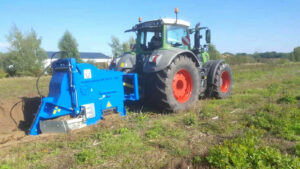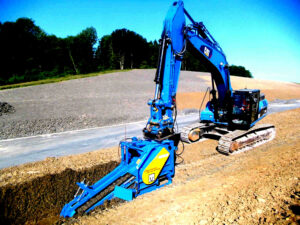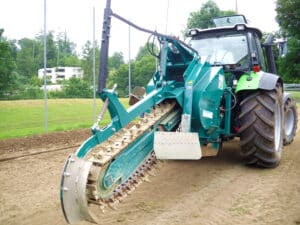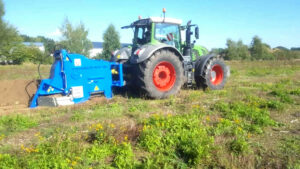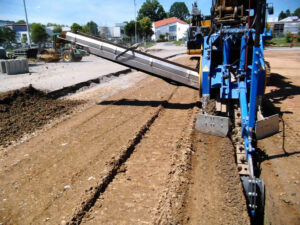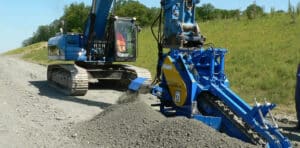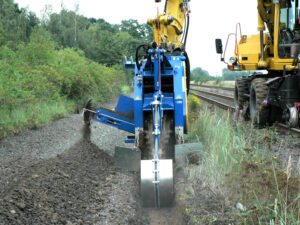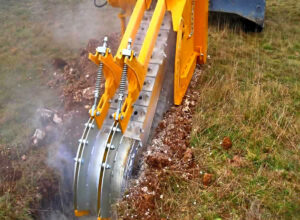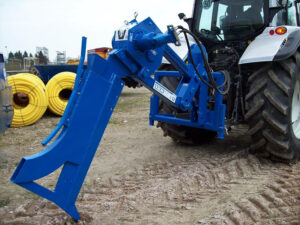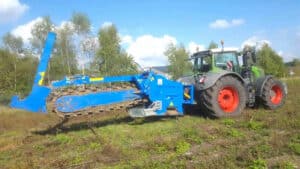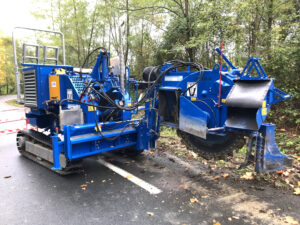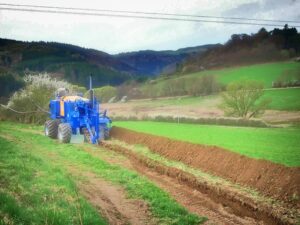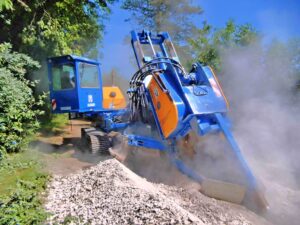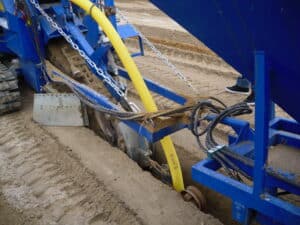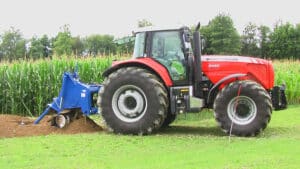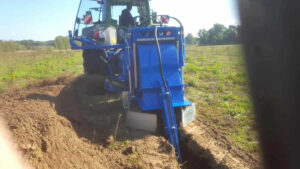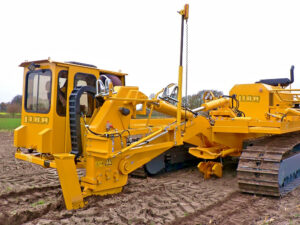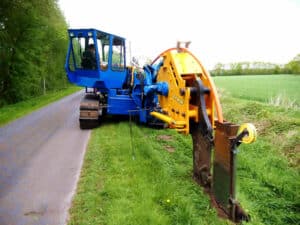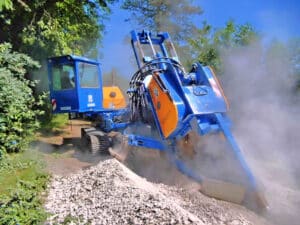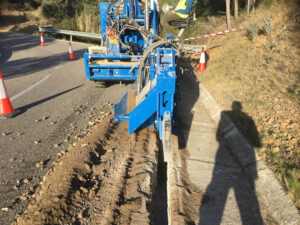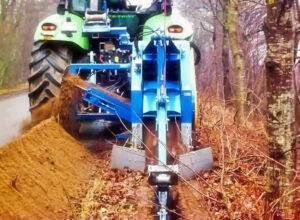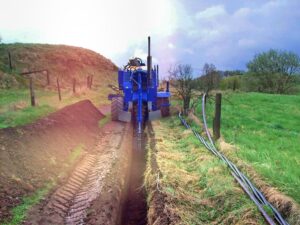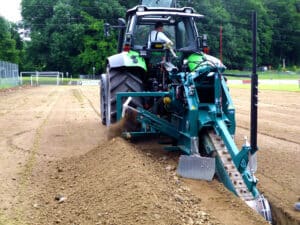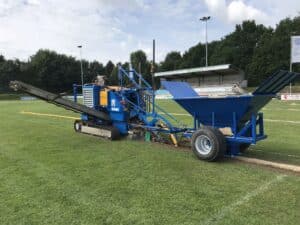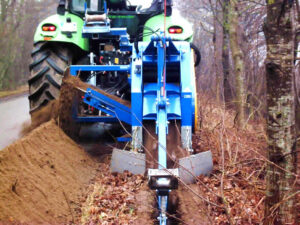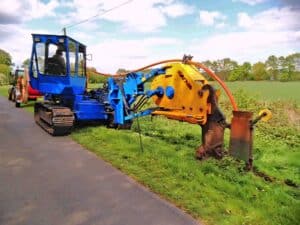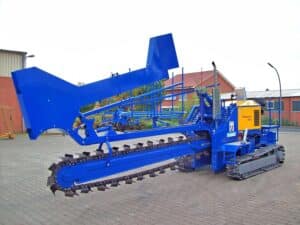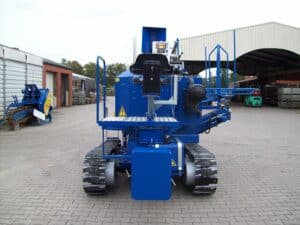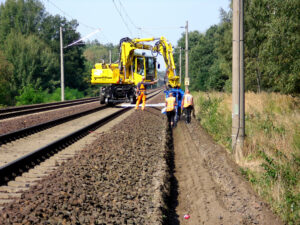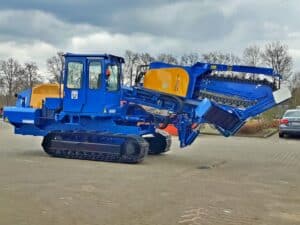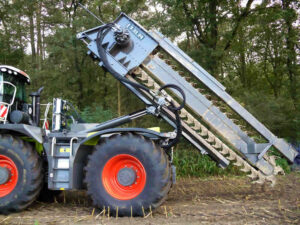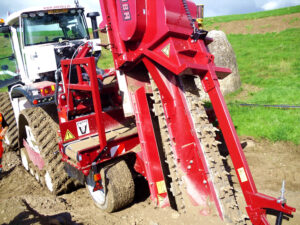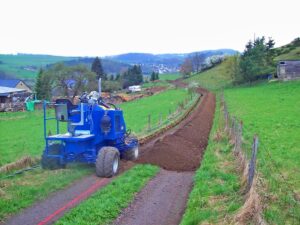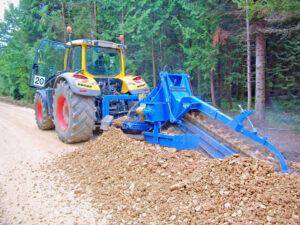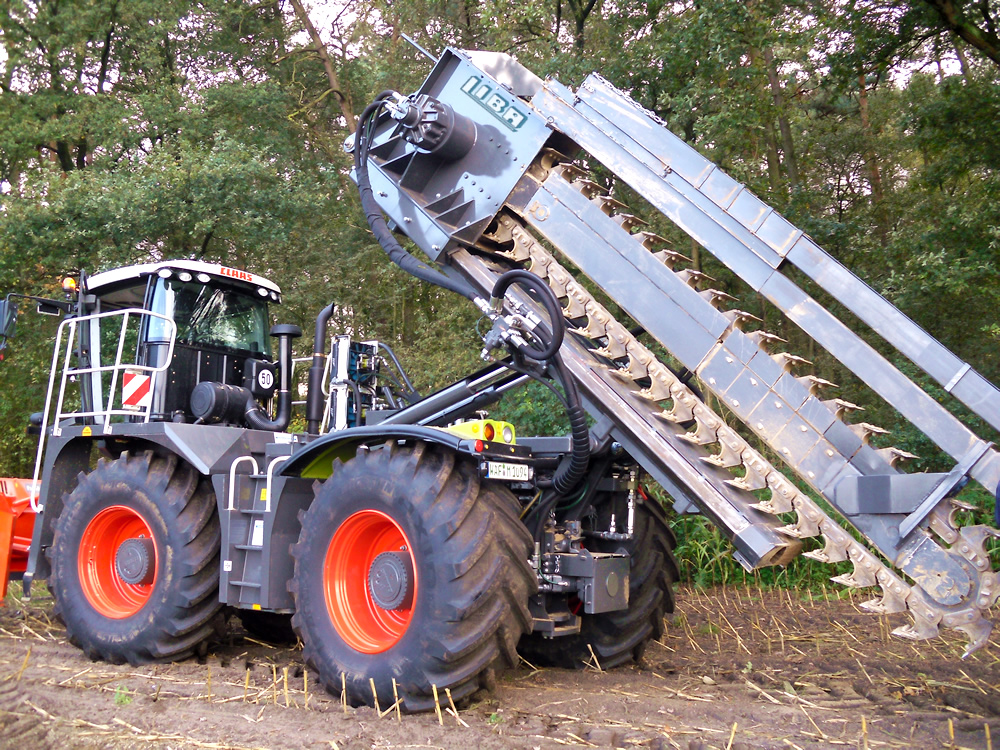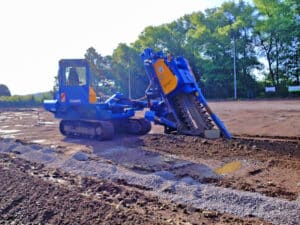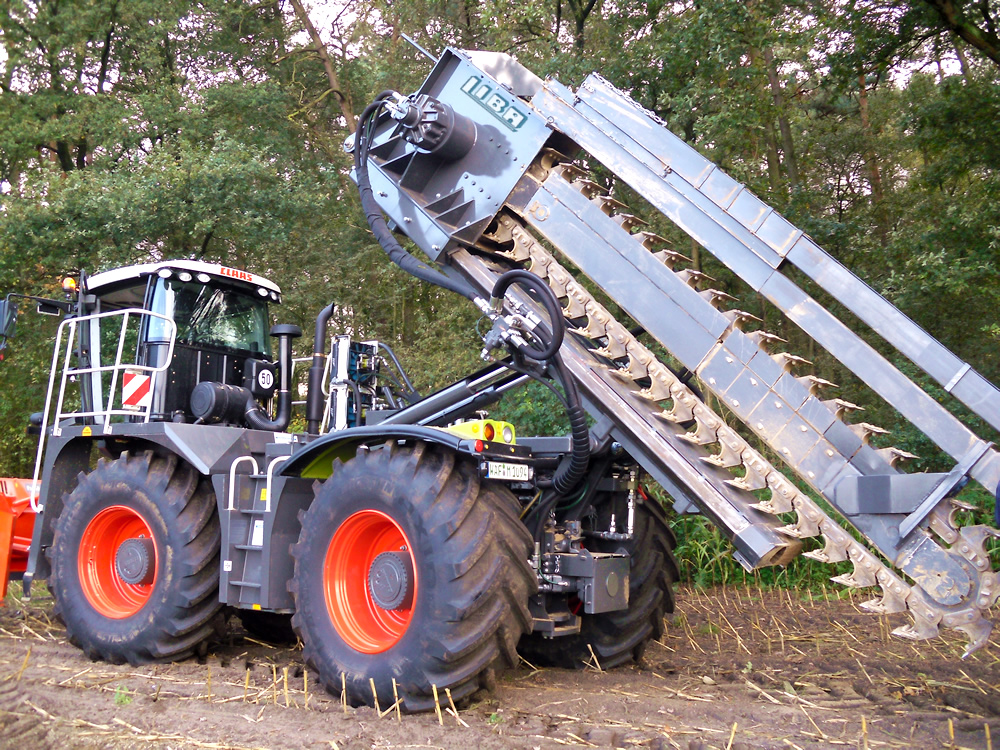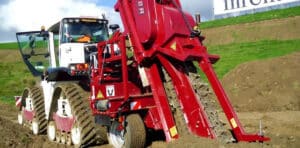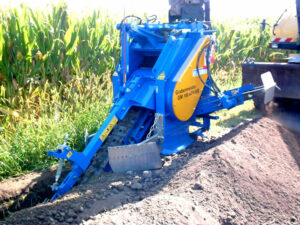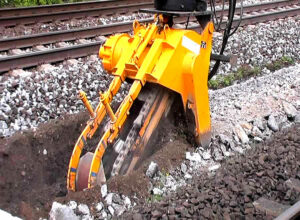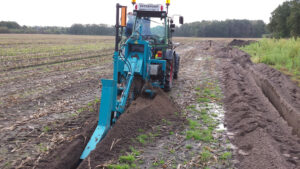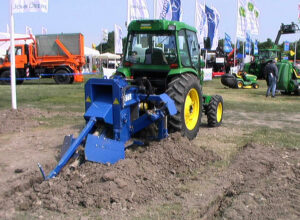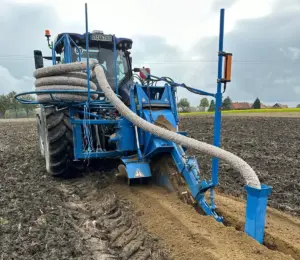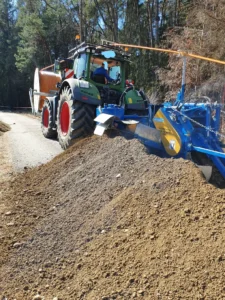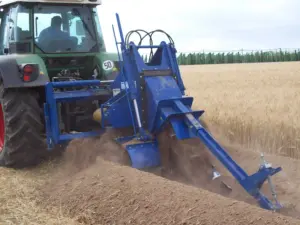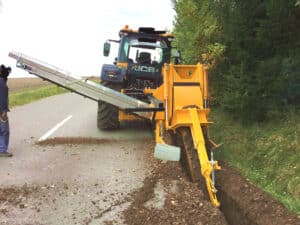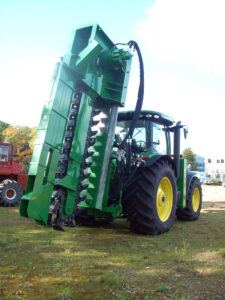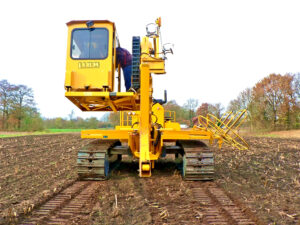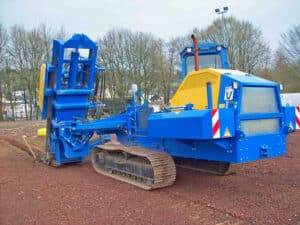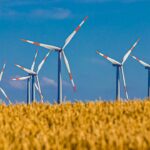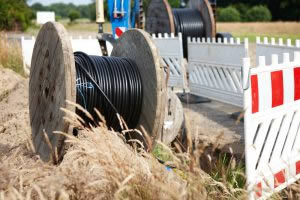Power lines for solar farms and wind farms are key suppliers of clean electricity as renewable energy expands. Especially in a time when the protection of the environment is more and more in focus, the supply by renewable energies is very important. At least as important are the lines that transmit this energy from the solar and wind farms. These must be properly laid, for which a trencher is best suited. A trencher can be used in several ways when building solar and wind farms. Here are some ways a trencher can be used in this area:
- Laying cables: A trencher can be used to cut trenches for laying cables between solar panels or wind turbines. These trenches can help ensure that cables are installed safely and properly, which contributes to efficient power generation.
- Foundation work: A trencher can also be used in the construction of foundations for solar and wind power plants. The trencher can cut trenches to set the foundation and anchors, which contributes to the stability of the facilities.
- Drainage work: A trencher can also be used to cut trenches for drainage systems in solar and wind farms. The ditches can help ensure that stormwater is effectively drained to protect facilities and the surrounding area.
- Soil profiling: A trencher can also be used to profile the soil in order to create a level surface for the construction of solar and wind power plants. Soil profiling can remove obstacles and unevenness to create a flat and stable surface for the construction of the facilities.
It is important that the trencher is selected according to the needs and requirements of the solar or wind power project and operated by qualified professionals to ensure safe and efficient use.
Advantages of the trencher
Using a trencher to install power lines for solar farms and wind farms offers several advantages, including:
- Efficiency: A trencher can excavate large amounts of soil in a short time, which speeds up the process of laying power lines and saves time.
- Precision work: A trencher can dig trenches with high precision, which is an advantage when installing power lines. This allows for better planning and more precise trenching, reducing the risk of rework.
- Less damage to the surrounding area: using a trencher reduces damage to the surrounding area compared to other methods because it excavates only a narrow trench, causing less disruption to the surrounding landscape and infrastructure.
- Flexibility: A trencher can also work in tight areas, which is an advantage when installing power lines, especially in densely populated areas.
Some examples of the use of a trencher in the installation of power lines for solar farms and wind farms are:
- Laying power lines between solar panels in solar farms to collect and deliver energy to the grid.
- Laying power lines at wind farms to collect electricity from wind turbines and deliver it to the power grid.
- Laying power lines from solar farms and wind farms to the power grid to integrate the generated energy into the grid.
- Laying power lines in rural areas to ensure electricity supply.
- Laying power lines under rivers or roads to provide power and not interfere with traffic.
Suitable trenchers to create power lines for solar and wind farms are:
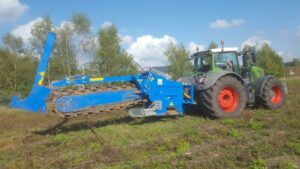
Cable laying with the GM 180 AF
Cable laying with the GM 180 AF The GM 180 AF trencher from Lingener Baumaschinen is a specialized machine for cable laying. It can effectively
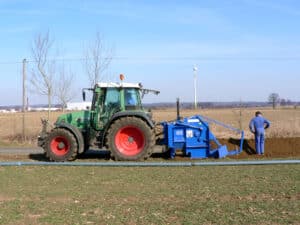
GM 140 AF – trencher for tractors
The GM 140 AF trencher from Lingener Baumaschinen is a powerful machine specially designed for use on a tractor. It is ideal for use in

GM 4 All-wheel drive – sports field drainage with the trencher
https://youtu.be/dBrvvjGquGI The GM4 Allrad trencher from Lingener Baumaschinen is a powerful machine designed for sports field drainage. The machine has a powerful 4-cylinder diesel engine
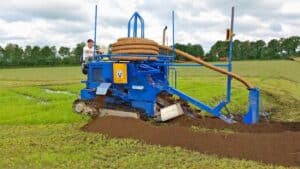
GM 4 Caterpillar – trencher for laying fiberglass
The GM 4 crawler trencher from Lingener Baumaschinen is a special machine designed for fiberglass laying. It is a tracked tiller ideal for use in


